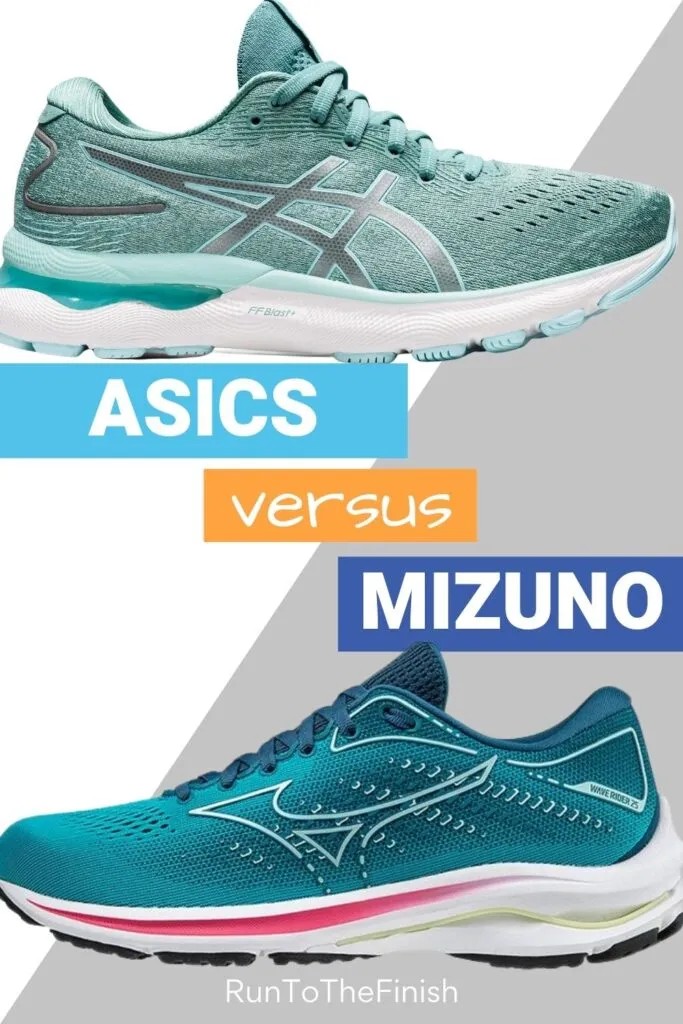Mizuno and ASICS, two renowned running shoe brands, often leave runners wondering which offers a better fit. Both are known for quality and performance, catering to various running styles and needs. This article delves into a detailed comparison of Mizuno and ASICS shoe fit, examining key features and popular models to help you make an informed decision.
Mizuno vs. ASICS: A Fit Comparison
While both brands offer a generally snug fit compared to wider options like Hoka or Altra, there are notable differences:
Mizuno:
- Generally aligns with traditional shoe fits, similar to ASICS and Brooks.
- Doesn’t offer shoes with a heel drop lower than 8mm.
ASICS:
- Often perceived as having a narrower fit, particularly in the heel and midsole.
- Offers a wider range of heel drops, from 5mm to 10mm and higher.
- Features an external heel clutch for a more secure fit and support.
Deep Dive into Features: Durability, Breathability, and Technology
Durability: Both brands boast comparable lifespans, with Mizuno suggesting a 6-month lifespan for casual runners (20 miles per week) and ASICS recommending replacement every 450-500 miles. Individual running style, weight, and terrain will ultimately determine shoe longevity.
Breathability: Mizuno employs Drylite and CoolTouch technologies to wick away moisture and accelerate drying. ASICS utilizes Ortholite Lasting material for cushioning and moisture management.
Cushioning & Stability: Mizuno’s signature Wave Technology disperses impact forces for a smoother transition, while ASICS relies on Flytefoam for responsiveness and GEL technology for shock absorption. Both brands incorporate stability features; Mizuno modifies its Wave plates, while ASICS uses the Duomax dual-density midsole system for enhanced support.
Model Matchup: Comparing Top Stability, Neutral, and Cushioned Shoes
Stability:
-
ASICS GEL-Kayano: A long-standing favorite for overpronators, offering substantial stability and cushioning for marathons. Features a 10mm heel drop.
-
Mizuno Wave Inspire: Provides a firmer feel typical of stability shoes, with a wider forefoot. Designed for daily training but might feel heavier for marathons. Features a 12mm heel drop.
Neutral:
-
ASICS Novablast 5: A max-cushion shoe with a responsive feel, updated with FF Blast Max foam. The wider platform enhances stability even without specific stability features. Features an 8mm heel drop.
-
Mizuno Wave Rider: Offers moderate cushioning and subtle support, suitable for newer runners or those recovering from injuries. Features a 12mm heel drop.
Cushioned:
-
ASICS GEL-Nimbus: A plush, max-cushion shoe with a substantial stack height (42mm), providing a comfortable ride for long distances. Features an 8mm heel drop.
-
Mizuno Wave Sky: Offers significant cushioning while retaining Mizuno’s signature stability. Some runners find the fit narrower compared to other models. Features an 8mm heel drop.
Finding Your Perfect Fit: Beyond Brand Loyalty
While Mizuno and ASICS are top contenders, choosing the right running shoe hinges on individual foot shape, gait, and running style. Regularly assessing your needs and trying on shoes before purchasing are essential for optimal performance and injury prevention. Remember, your perfect fit might evolve over time. Don’t hesitate to explore other brands if neither Mizuno nor ASICS meet your specific requirements.

